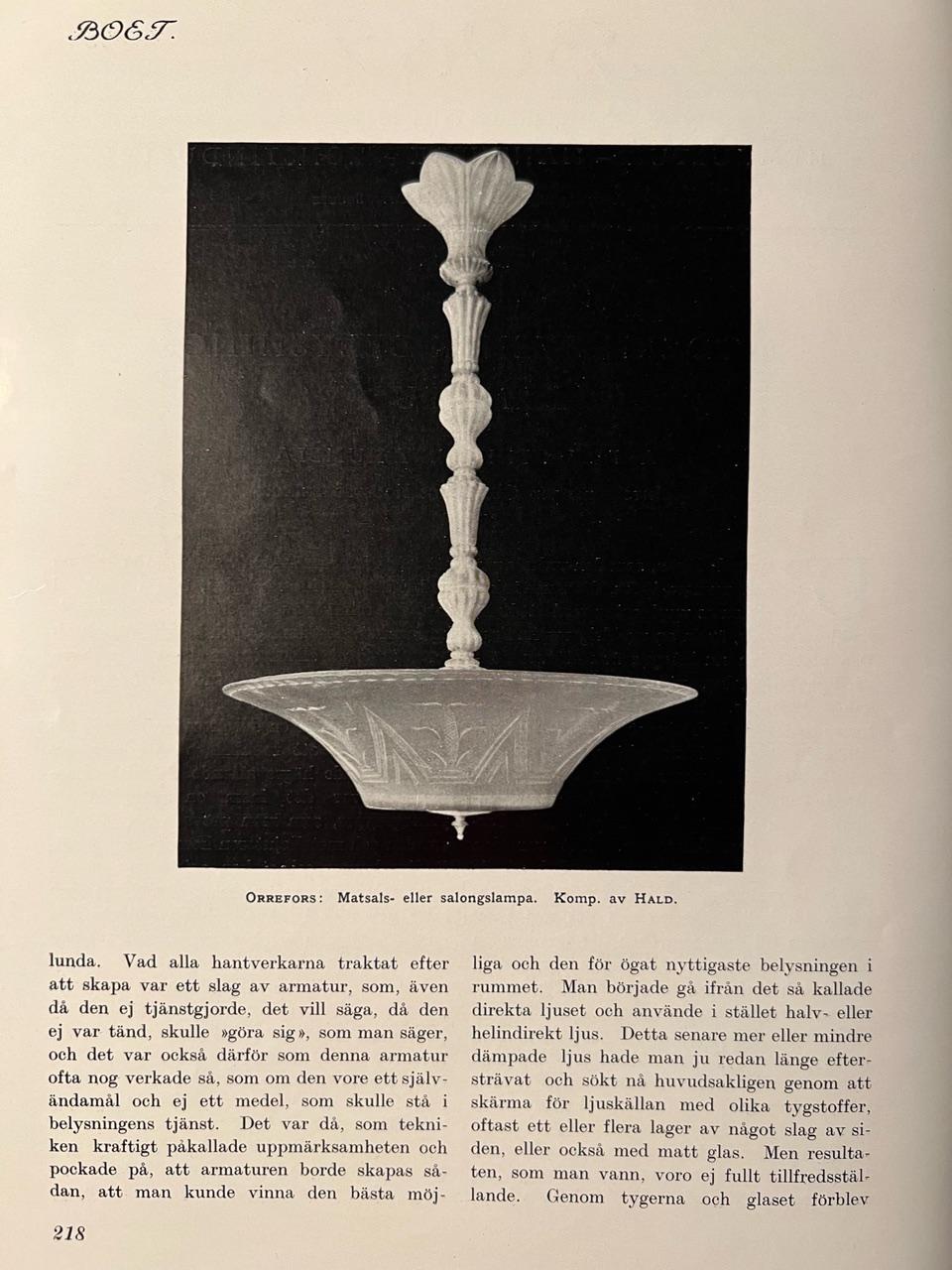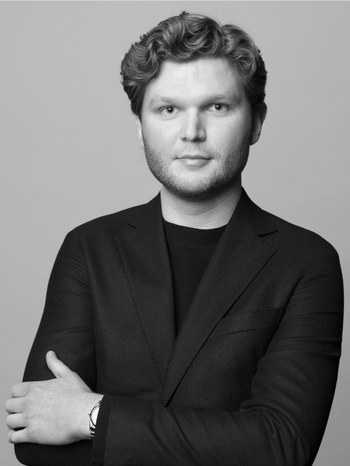Edward Hald
& Erik Tidstrand, a ceiling lamp, Orrefors & Nordiska Kompaniet, 1920s-30s.
Antique patinated brass, shade of amber-toned glass with cut decoration. Height 95 cm, diameter 60 cm. Prisms included.
Literature
Otto Schulz (ed.), "Boet: Månadsskrift för Hemkultur, Hantverk och Konstindustri", 1929, the shade model illustrated on p. 218.
Variants illustrated in the archives of Orrefors and Nordiska Kompaniet during the late 1920s and early 1930s.
More information
Designer
Edward Hald was a Swedish visual and glass artist born in Stockholm. He studied at the business school in Leipzig, the Artists' Association School, and he also was a student of Henri Matisse in Paris. Hald's artistry in the 1910s exhibited a modernist spirit, inspired by the Fauvist Matisse. Hald designed decorations for various models and services for Rörstrand Porcelain Factory as well as for Karlskrona Porcelain Factory. Edward Hald contributed these works to the Home Exhibition in 1917 at Liljevalchs in Stockholm and was hired by Orrefors Glassworks the same year. Together with Simon Gate and glassmaker Knut Bergqvist, he experimented with overlay glass, resulting in Graal glass. The Graal technique was entirely new and revolutionary. Hald's designs for both engraved and Graal glass display Matisse-inspired elements, humor, and contemporary motifs.
Read more




























































